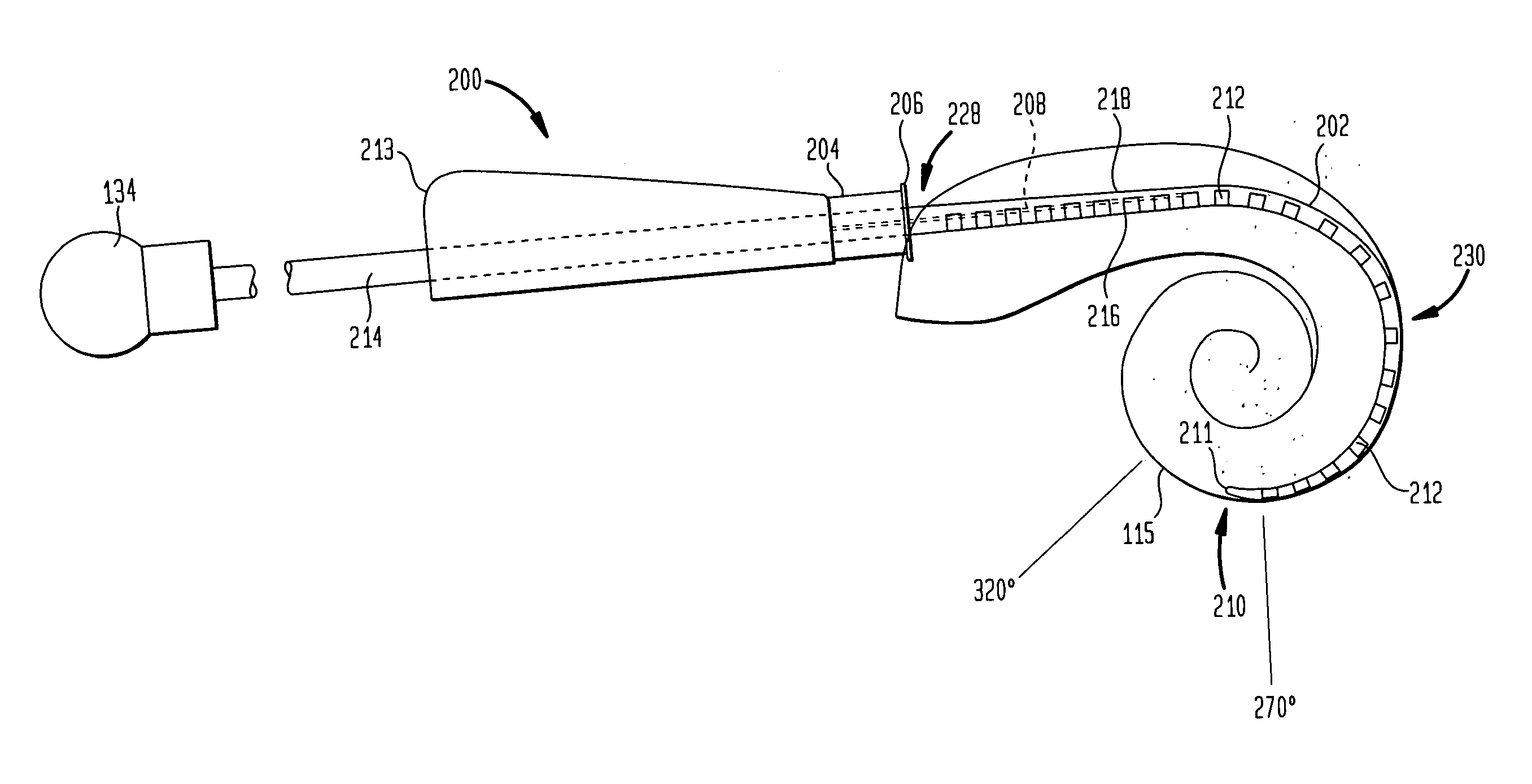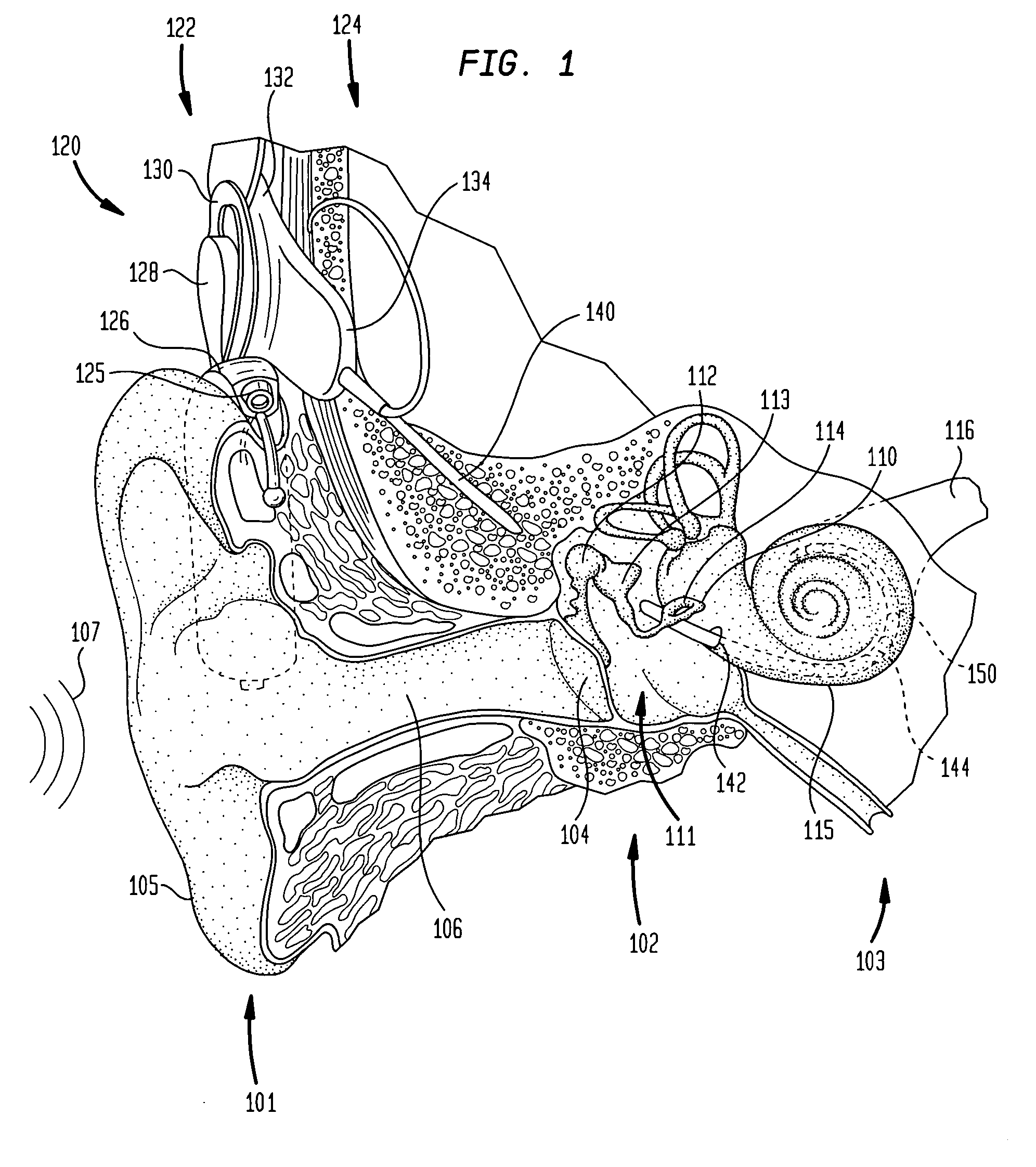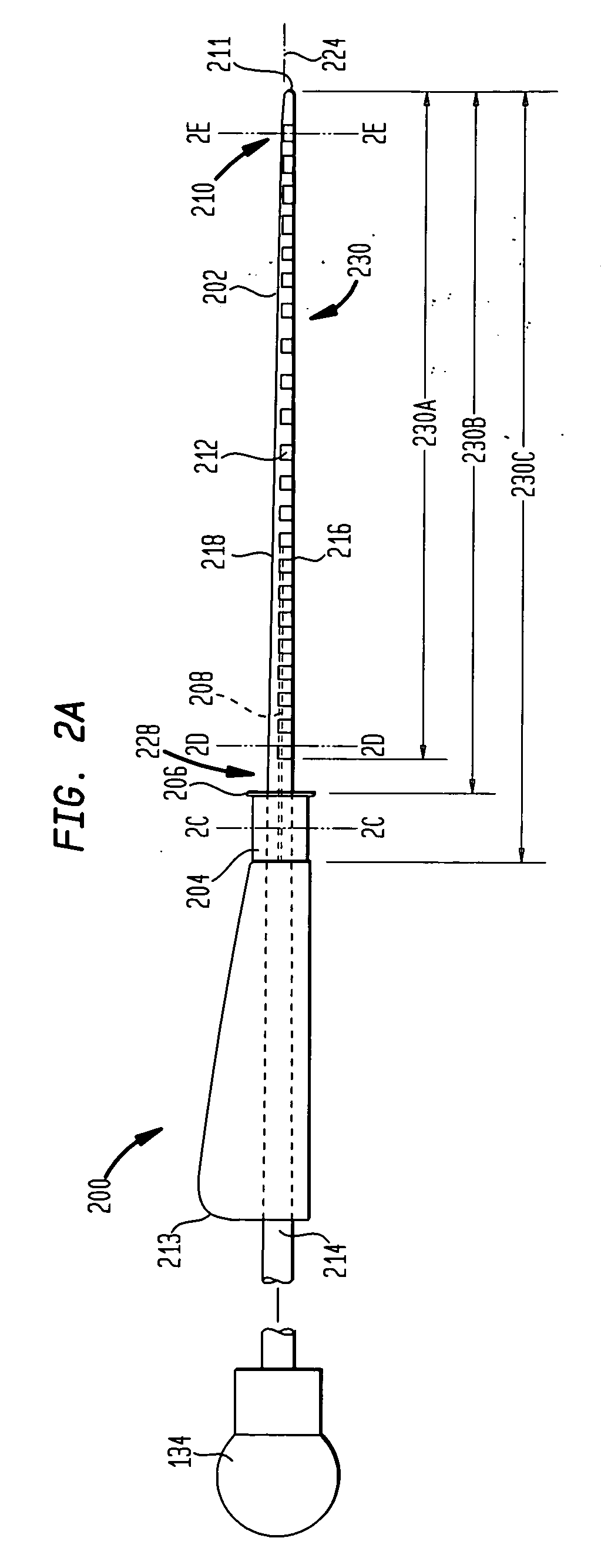Prosthetic hearing implant electrode assembly having optimal length for atraumatic implantation
a technology of implant electrodes and prosthetics, which is applied in the direction of external electrodes, internal electrodes, therapy, etc., can solve the problems of conductive hearing loss, impeded normal mechanical pathways for sound to reach the hair cells in the cochlea, and conductive hearing loss
- Summary
- Abstract
- Description
- Claims
- Application Information
AI Technical Summary
Problems solved by technology
Method used
Image
Examples
Embodiment Construction
[0017] Embodiments of the present invention are generally directed to an apparatus and method for facilitating implantation of a medical device into a patient (referred to herein as a recipient). Embodiments of the present invention are described below in connection with one type of medical device, a prosthetic hearing implant and, more specifically, a cochlear implant. Cochlear implants use direct electrical stimulation of auditory nerve cells to bypass absent or defective hair cells that normally transduce acoustic vibrations into neural activity. Such devices generally use multi-contact electrodes inserted into the scala tympani of the cochlea so that the electrodes may differentially activate auditory neurons that normally encode differential pitches of sound. Such devices are also used to treat a smaller number of patients with bilateral degeneration of the auditory nerve. For such patients, the cochlear implant provides stimulation of the cochlear nucleus in the brainstem. Suc...
PUM
 Login to View More
Login to View More Abstract
Description
Claims
Application Information
 Login to View More
Login to View More - R&D
- Intellectual Property
- Life Sciences
- Materials
- Tech Scout
- Unparalleled Data Quality
- Higher Quality Content
- 60% Fewer Hallucinations
Browse by: Latest US Patents, China's latest patents, Technical Efficacy Thesaurus, Application Domain, Technology Topic, Popular Technical Reports.
© 2025 PatSnap. All rights reserved.Legal|Privacy policy|Modern Slavery Act Transparency Statement|Sitemap|About US| Contact US: help@patsnap.com



